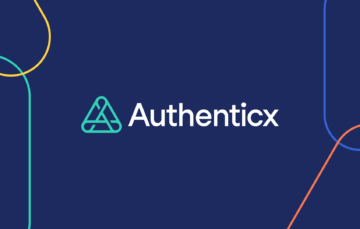
Data is everywhere.
Organizations and consumers are inundated day after day in receiving and sharing information digitally across different platforms, tools, channels, technologies, and online portals in order to gain insights. Conversational data is one source, in particular, that gives valuable insights.
Today, conversational data is collected across multiple sources and technologies, including:
- Online chat
- Social media activity
- Text messages
- Voice calls
- Forms and applications
- Online app and platform usage
- Tracking technologies (i.e., GPS, ‘cookies’)
- Other 3rd party sources
- And more!
Organizations today have no trouble sharing the many different data inputs and tools they have available. The problem that emerges is much of this collected data is unstructured (or not easily organized and accessible). Collecting data is only part of the equation.
Being able to analyze, gain context, and ultimately draw actionable meaning is the true value data can bring in solving problems facing organizational operations. Collecting data is great, but it only becomes valuable once it is interpreted into actionable insights.
Use of Data in Healthcare
Healthcare is not immune from this big data dilemma and there’s ongoing discussion on the use of data in healthcare. Health-focused organizations have many avenues for data collection and may even have invested in tools to help facilitate social listening and more qualitative feedback, yet continue to face a challenge of not being able to act and prompt meaningful changes. The full context behind the voice of the customer remains lost and uncertain.
Many of these social listening tools focus on speech analytics, highlighting keywords that are most frequently used or repeated. Some examples include:
- Transcription
- Word clouds
- Sentiment analysis
While these tools do provide a high level overview, it’s only a starting point since context is usually missing. Sure, it’s valuable to know ‘frustrated’ is a sentiment keyword that emerges frequently– but where, why, how, in what context is frustration cropping up—that’s what matters.
Particularly in healthcare, context is everything.
Health data analytics, when appropriately leveraged, can provide both qualitative and quantitative feedback that helps make sense of the data and provide actionable insights. Conversational data analysis is a powerful way to bring the voice of the customer forward with immersive storytelling (and utilizing information that is already being stored!).
How Can Health Data Analytics Provide Structured Insights?
Being able to make intelligent, data-driven decisions can be invaluable when it comes to evaluating personnel management, staff training, customer journeys, or patient-centric insights for learning and development. For insightful health data analytics, keep in mind, data is more than just software or a tool, you need a structured way to interpret and identify key trends.
Here, we breakdown 4 ways to structure data to provide meaningful insights:
1. Identify Necessary Context
Meaningful change can only occur if necessary context is applied to collected data. Context emerges by listening to the conversation, not just categorizing words. By listening to the natural back-and-forth conversations, meaningful output can be found in identifying future needs, vision, or ideal outcomes.
Big data analytics in healthcare only becomes useful after it can be interpreted to extract meaning. In healthcare, analyzing conversational data can help reduce costs, predict behavior, improve the customer journey, be mindful of compliance, and other strategic approaches to better operational processes.
2. Build Comprehensive Customization
By customizing your data approach by asking a question, concern, or topic of focus, organizations can leverage conversational data to identify opportunities and threats and act on a deeper level of understanding around the customer journey.
Since much of data collected is undefined and unstructured in its raw form, having a question or direction can help data mining efforts to identify key behaviors, define key trends and understand customer sentiment in order to build a comprehensive understanding of the customer experience.
3. Prioritize Impactful Action
As we’ve established, observations without context can’t facilitate action. However, all action can’t be taken at once, so it’s important to prioritize next steps. That could mean accelerating what’s already in motion with existing customer interactions, updating messaging, or re-evaluating processes. This kind of approach can have an impact on strategic planning and planfully creating future-facing business plans for growth and retention.
4. Listen and Learn
Collected data allows organizations to listen directly to the voice of the customer and learn where and how they can continue to improve.
Investing in this kind of holistic, immersive insight helps:
- Identify themes and real interactions directly from customers (instead of being left to make assumptions)
- Sample real interactions that are directly responding to your various communication and messaging campaigns, product launches, and other initiatives
- Listen at scale to customer challenges and pain points
- Listen for business needs
- Learn, understand, and continually improve and adapt processes in place
In Conclusion
For a true patient-centric, outcome-driven approach more than simply data is needed. Structured, actionable insights provide context and teaching that is customized to specific organization questions and challenges in order to facilitate impactful change.

See Authenticx in Action
Learn more about how Authenticx analyzes customer conversations to surface recurring trends in this two-minute video.
About Authenticx
Authenticx was founded to analyze and activate customer interaction data at scale. Why? We wanted to reveal transformational opportunities in healthcare. We are on a mission to help humans understand humans. With a combined 100+ years of leadership experience in pharma, payer, and healthcare organizations, we know first-hand the challenges and opportunities that our clients face because we’ve been in your shoes.
Want to learn more? Contact us!


